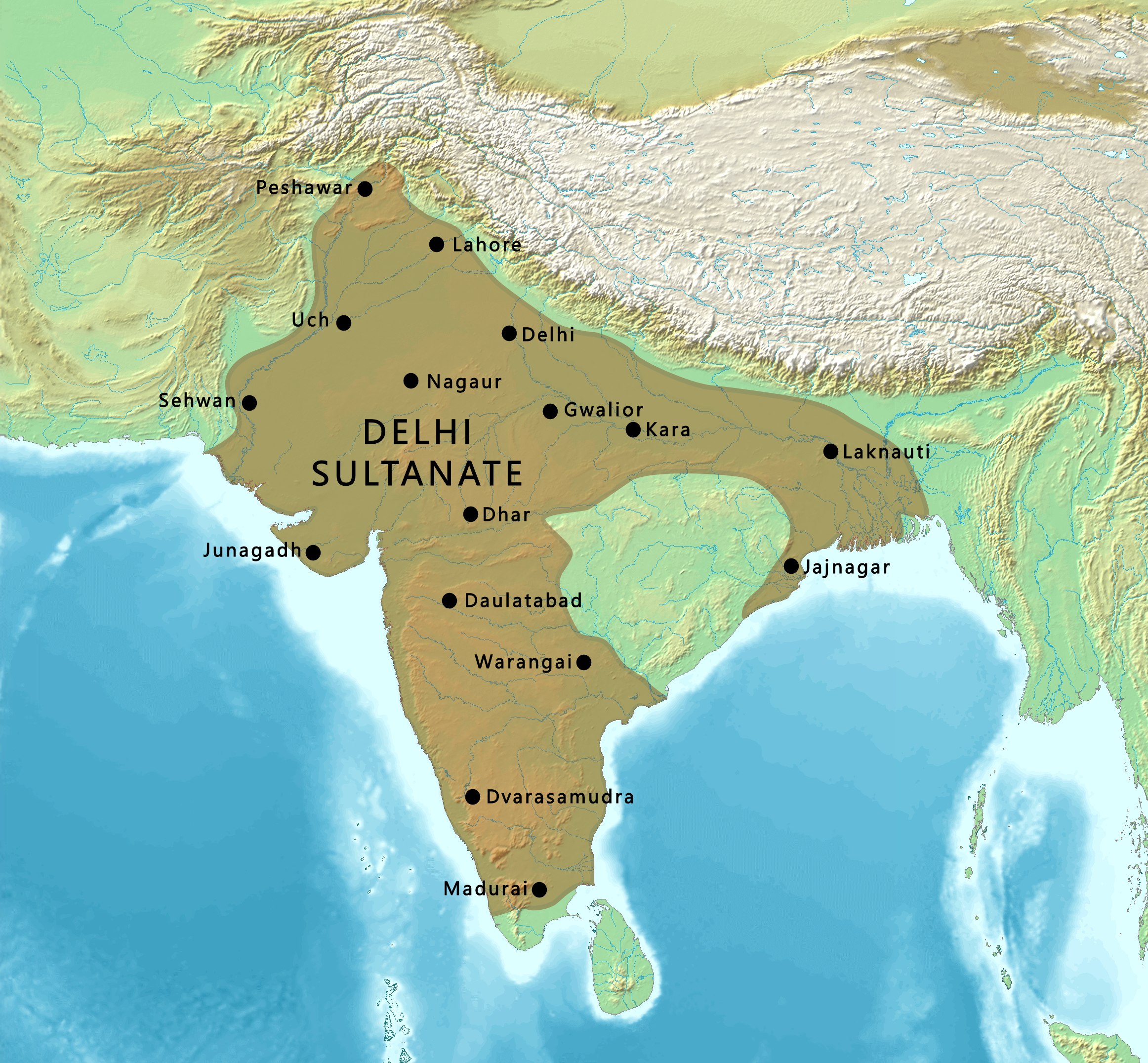Delhi Sultanate
The Delhi Sultanate is a crucial topic for the UPSC IAS exam, covering a significant portion of medieval Indian history. Here is a detailed analysis of the Delhi Sultanate, including its establishment, administration, socio-economic setup, cultural impact, and decline.
Establishment of the Delhi Sultanate
The Delhi Sultanate was established following the invasion of Muhammad Ghori, who defeated the Rajput king Prithviraj Chauhan in the Second Battle of Tarain in 1192. After Ghori’s death in 1206, his slave general Qutb-ud-din Aibak declared himself the Sultan of Delhi, marking the beginning of the Mamluk (Slave) dynasty. The Sultanate lasted from 1206 to 1526 and was ruled by five successive dynasties: the Mamluk, Khalji, Tughlaq, Sayyid, and Lodi dynasties.
Dynasties of the Delhi Sultanate
- Mamluk (Slave) Dynasty (1206-1290)
- Qutb-ud-din Aibak: Founder of the dynasty, known for starting the construction of the Qutub Minar.
- Iltutmish: Consolidated the Sultanate, introduced the Iqta system, and completed the Qutub Minar.
- Razia Sultana: The first and only female ruler of the Sultanate.
- Ghiyas-ud-din Balban: Strengthened the administration and military, known for his strict rule.
- Khalji Dynasty (1290-1320)
- Jalal-ud-din Khalji: Founder of the dynasty.
- Alauddin Khalji: Expanded the empire, introduced market reforms, and repelled Mongol invasions.
- Tughlaq Dynasty (1320-1414)
- Ghiyas-ud-din Tughlaq: Founder of the dynasty.
- Muhammad bin Tughlaq: Known for his ambitious projects like shifting the capital to Daulatabad and introducing token currency.
- Firoz Shah Tughlaq: Focused on public works and infrastructure development.
- Sayyid Dynasty (1414-1451)
- Khizr Khan: Founder of the dynasty, ruled as a vassal of the Timurids.
- Mubarak Shah: Strengthened the administration.
- Lodi Dynasty (1451-1526)
- Bahlul Lodi: Founder of the dynasty.
- Sikandar Lodi: Expanded the empire and improved administration.
- Ibrahim Lodi: The last ruler, defeated by Babur in the First Battle of Panipat, leading to the establishment of the Mughal Empire.
Administration of the Delhi Sultanate
The administration of the Delhi Sultanate was highly organized and based on Islamic principles. The Sultan was the supreme authority, supported by various ministers and officials.
- Central Administration
- Sultan: Head of the state with absolute power.
- Naib: Deputy to the Sultan.
- Wazir: Prime Minister, responsible for finance.
- Diwan-i-Ariz: Head of the military.
- Diwan-i-Risalat: Foreign affairs minister.
- Diwan-i-Insha: In charge of correspondence.
- Sadr-us-Suddar: Head of religious affairs.
- Provincial Administration
- The empire was divided into Iqtas, governed by Iqtadars or Muqtis.
- Provinces were further divided into Shiqs, Parganas, and villages.
- Judicial Administration
- Based on Sharia law, with Qazis (judges) administering justice.
Socio-Economic Setup
- Economic Conditions
- Agriculture was the primary source of income, with land revenue being the main tax.
- Trade and commerce flourished, with Delhi becoming a major trade center.
- The currency system was based on the silver tanka.
- Social Conditions
- Society was divided into Hindus and Muslims, with further divisions among Muslims into nobility and commoners.
- The Purdah system and practices like Sati were prevalent among Hindus.
- Slavery was common, and artisans and traders formed the middle class.
Cultural Impact
- Architecture
- The Delhi Sultanate introduced Indo-Islamic architecture, characterized by the use of red sandstone and marble, intricate carvings, and calligraphy.
- Notable structures include the Qutub Minar, Alai Darwaza, and Tughlaqabad Fort.
- Literature and Language
- Persian was the court language, influencing Indian literature and culture.
- The Sultanate patronized scholars and poets, leading to the growth of Persian and Urdu literature.
- Religion
- The Sultanate promoted Islam, but also saw the growth of Sufism, which played a significant role in spreading Islam in India.
- The Bhakti movement also gained momentum during this period, promoting religious harmony.
Decline of the Delhi Sultanate
The decline of the Delhi Sultanate was due to several factors:
- Internal Conflicts: Frequent power struggles and weak rulers.
- External Invasions: Invasions by Timur in 1398 and the rise of regional powers.
- Economic Instability: Heavy taxation and administrative inefficiencies.
- Military Defeats: The final blow came with the defeat of Ibrahim Lodi by Babur in the First Battle of Panipat in 1526, leading to the establishment of the Mughal Empire.
Conclusion
The Delhi Sultanate played a pivotal role in shaping medieval Indian history. Its administration, socio-economic setup, and cultural contributions had a lasting impact on the Indian subcontinent. Understanding the Delhi Sultanate is essential for UPSC IAS exam preparation, as it provides insights into the political, social, and cultural transformations that occurred during this period.









